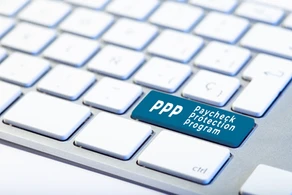The Senate unanimously passed H.R. 7010 on Wednesday. The bill now moves to the President’s desk for signature. The bill, referred to as the “Paycheck Protection Program Flexibility Act of 2020” significantly modifies the rules related to PPP loan forgiveness.
Let me get this out of the way now. We can all breathe a sigh of relief that the government got this bill through and it will provide relief to millions of small business owners; however we will remain at the mercy of the SBA and Treasury Department to provide additional guidance and clarification as it relates to the various components of this bill. At least we have more time!
Forgiveness – Covered Period
H.R. 7010 extends the covered period from 8 weeks to 24 weeks or December 31, whichever comes earlier. This extension makes it significantly easier for the majority of businesses to use the funds in a way that should result in 100% forgiveness. Keep reading though, it seems that with the PPP, ambiguity can’t be avoided.
For those that have PPP loans prior to the enactment of this bill, borrowers can opt to use the existing 8-week covered period. This may be beneficial for those that are certain they have already achieved 100% forgiveness.
Forgiveness – Payroll Spend Rule
H.R. 7010 replaces the 75% payroll spend requirement (to have an opportunity for full forgiveness) with 60%. That means you can spend up to 40% on non-payroll costs (rent, utilities, mortgage interest). This is where we get into some of the ambiguity.
The portion of H.R. 7010 addressing the new 60/40 rule reads as follows, “To receive loan forgiveness under this section, an eligible recipient shall use at least 60 percent of the covered loan amount for payroll costs…”.
The way I read this is if you do not spend 60 percent of the loan proceeds on payroll you will receive no forgiveness. There was discussion in the Senate related to this restrictive language. It is certainly possible we see an FAQ or Interim Final Rule that modifies the language or clarifies the actual intent.
Maturity Date
The CARES Act initially stated that PPP loans would have a maturity of 10-years. The SBA came in after the fact and changed the maturity to 2-years. H.R. 7010 changes the maturity date again. H.R. 7010 extends the maturity to 5-years. This 5-year maturity only applies to loans made after the enactment of this bill, however the bill specifically states that borrowers and lenders are free to renegotiate existing terms to match the new 5-year standard maturity.
Additionally, the deferment of payment of principal and interest has been modified. The CARES Act limited deferment to six months. H.R. 7010 allows deferral until the date the lender receives the forgiveness amount from the SBA, which as you will read later could be significantly later than six months.
Forgiveness – Penalty Provisions
H.R. 7010 extends the June 30 safe harbor deadline to December 31, 2020. If you restore your headcount and salary/hourly wage to February 15 levels by December 31, 2020, you will not face any penalty provisions.
Forgiveness – New Exemption
H.R. 7010 provides a new exemption for businesses that remain partially or fully closed through the end of 2020. Forgiveness will not be reduced for borrowers who experience a loss of FTE’s if they are able to document any of the following:
-
An inability to rehire individuals who were employees of the eligible recipient on February 15
-
An inability to hire similarly qualified employees for unfilled positions on or before December 31
-
An inability to return to the same level of business activity as such business was operating at before February 15 due to compliance with requirements established or guidance issued by government agencies related to COVID-19
Forgiveness – Filing Deadline
H.R. 7010 indicates borrowers have 10 months from the last day of the covered period to apply for forgiveness. This poses significant problems for tax preparers – see below.
Deferred Payroll Taxes
The CARES Act established the deferment of employer’s share of Social Security taxes in 2020. Those taxes are to be repaid at the end of 2021 and 2022 (50/50). This deferment opportunity ended when borrowers received forgiveness. H.R. 7010 eliminates this provision and allows borrowers to defer taxes for all of 2020. The repayment dates have not changed.
What Else Do We Need To Know?
-
With the extension of the covered period, we need guidance on the payroll spend limits per employee. Previously it was $100,000 over 8 weeks, which equated to $15,385. Has that now changed to $46,153 ($100,000/52*24)?
-
Will there be any changes related to owner compensation limits? We found out recently that owner compensation is capped at the lesser of $15,385 or 8/52 of 2019 compensation. Could that change to 24/52 of 2019 compensation?
-
Over a month ago, the IRS stated that PPP amounts (expenses) that end up forgiven are not deductible. Combining this with the extended covered period and the 10-month forgiveness application deadline, it is unclear how borrowers and tax preparers will file their 2020 business tax returns in 2021. It is very likely borrowers and tax preparers will not know what amounts have been forgiven and are non-deductible prior to 2021 filing deadlines.
